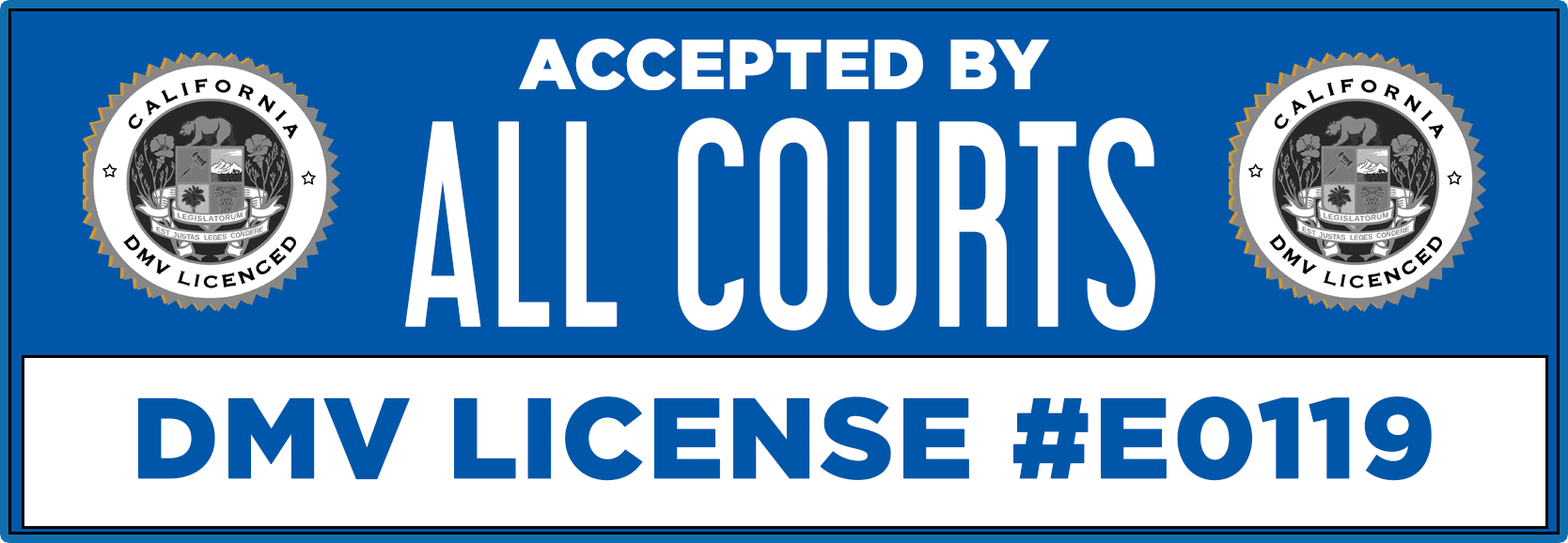Anti-lock Brake Systems (ABS) is a critical safety feature in modern vehicles, designed to prevent wheel lock-up during emergency braking. By maintaining traction and allowing drivers to steer, ABS significantly reduces the risk of skidding and accidents, especially in challenging road conditions. This article will explore how ABS works, its benefits, and its integration with other advanced safety systems, providing you with a comprehensive understanding of why ABS is essential for safe driving.
1. History and Evolution of ABS
Introduction to ABS: The Anti-lock Brake System (ABS) is one of the most significant advancements in automotive safety technology. Its primary purpose is to prevent the wheels from locking up during braking, thus maintaining traction with the road surface and allowing the driver to maintain steering control.
Origins of ABS: ABS technology originated in the aviation industry during the 1920s and 1930s. It was designed to prevent aircraft from skidding during landings. The British company Dunlop developed the first automotive ABS in the 1950s, but it wasn’t until the 1970s that ABS began to be implemented in passenger vehicles.
Early Adoption in Vehicles: The first production car to feature ABS was the 1966 Jensen FF, a luxury sports sedan. However, it wasn’t until the late 1970s and early 1980s that ABS became more widely available in vehicles, thanks to technological advancements and the push for improved vehicle safety. Mercedes-Benz and BMW were among the early adopters, offering ABS as an option in their high-end models.
Technological Advancements: ABS technology has evolved significantly over the years. Modern ABS systems are highly sophisticated, featuring multiple sensors, faster response times, and integration with other vehicle safety systems like Electronic Stability Control (ESC). The development of microprocessors in the 1980s played a crucial role in enhancing ABS performance, making it more reliable and effective under a wide range of driving conditions.
Conclusion: Today, ABS is a standard feature in most vehicles worldwide, contributing to safer driving and reducing the risk of accidents. Understanding the history and evolution of ABS helps drivers appreciate the technological advancements that have made modern vehicles safer.
2. How ABS Works: A Detailed Explanation
Introduction to ABS Mechanics: The anti-lock brake system (ABS) is a crucial component in modern vehicles. It is designed to enhance safety during emergency braking situations. Understanding how ABS works can help drivers make the most of this technology and improve their overall driving safety.
Critical Components of ABS: The ABS consists of several key components:
- Wheel Speed Sensors: These sensors monitor the speed of each wheel and detect when a wheel is about to lock up.
- Electronic Control Unit (ECU): The ECU is the brain of the ABS, processing signals from the wheel speed sensors and determining when to activate the system.
- Hydraulic Valves: These valves control the brake pressure applied to each wheel, modulating it to prevent lock-up while maintaining optimal braking force.
Operational Process: When a driver applies the brakes under normal conditions, the ABS remains inactive, allowing conventional braking to occur. However, in an emergency situation where the driver brakes hard, and a wheel begins to lock up, the ABS kicks in.
- Detection: The wheel speed sensors detect that a wheel is decelerating rapidly and is about to lock up.
- Response: The ECU processes this information and sends signals to the hydraulic valves.
- Modulation: The hydraulic valves reduce the brake pressure on the affected wheel, allowing it to regain traction.
- Reapplication: Once the wheel begins to rotate again, the ECU re-applies brake pressure. This process occurs multiple times per second, creating the pulsating feeling often associated with ABS activation.
Benefits of ABS Operation: ABS’s key benefit is that it allows the driver to maintain steering control during hard braking. By preventing wheel lock-up, ABS reduces the risk of skidding and helps keep the vehicle stable, especially in slippery conditions.
Conclusion: ABS is a sophisticated system that plays a critical role in vehicle safety. By understanding its components and operation, drivers can better appreciate the technology that helps them stay in control during emergency braking situations.
3. Benefits of ABS
Introduction to ABS Benefits: The Anti-lock Brake System (ABS) is more than just a technological feature in modern vehicles—it’s a lifesaving tool. Understanding the benefits of ABS can help drivers appreciate its value in everyday driving and emergencies.
Enhanced Safety on the Road: The primary benefit of ABS is its ability to prevent wheel lock-up during hard braking. This reduces the likelihood of skidding and allows the driver to maintain steering control. Whether driving on a wet road, encountering black ice, or navigating through gravel, ABS helps keep your vehicle stable and on course.
Reduction in Accident Severity: Studies have shown that vehicles equipped with ABS are less likely to be involved in severe accidents. By allowing drivers to maintain control of their vehicle during emergency braking, ABS reduces the chances of a collision. In situations where an accident is unavoidable, ABS can help minimize the impact, potentially saving lives.
Improved Vehicle Stability: ABS works in tandem with other safety systems like Electronic Stability Control (ESC) to enhance vehicle stability. By preventing wheel lock-up, ABS ensures that the vehicle remains balanced and responsive to steering inputs, even under heavy braking. This is particularly important in vehicles with a high center of gravity, such as SUVs, where the risk of rollover is higher.
Confidence in Emergency Situations: Knowing that their vehicle is equipped with ABS provides peace of mind for many drivers. In an emergency, ABS allows the driver to focus on steering and navigating out of danger rather than worrying about the vehicle skidding or losing control.
Conclusion: ABS offers numerous benefits that contribute to safer driving. From reducing the risk of accidents to improving vehicle stability, ABS is an essential feature that helps protect drivers, passengers, and other road users.
4. Common Myths and Misconceptions about ABS
Introduction to ABS Myths: Despite their widespread use and proven safety benefits, anti-lock brake systems (ABS) still elicit many myths and misconceptions. Clearing up these misunderstandings can help drivers use ABS more effectively and avoid dangerous assumptions.
Myth 1: ABS Reduces Stopping Distance One of the most common misconceptions is that ABS reduces stopping distance. While ABS helps maintain control and prevents wheel lock-up, it doesn’t necessarily shorten stopping distances in all conditions. On some surfaces, like loose gravel or snow, ABS can actually increase the stopping distance slightly. However, the trade-off is improved steering control, which is crucial for avoiding obstacles.
Myth 2: ABS Allows for Reckless Driving Some drivers mistakenly believe that ABS allows them to drive more aggressively or take more significant risks. This is a dangerous assumption. ABS is a safety feature designed to assist in emergencies, not a tool for enabling reckless driving. Drivers should always maintain safe driving habits, regardless of whether their vehicle is equipped with ABS.
Myth 3: ABS Should Be Turned Off in Certain Conditions There’s a misconception that ABS should be turned off in certain conditions, such as off-road driving or snow. Modern ABS systems are designed to function effectively in a wide range of conditions. Turning off ABS can increase the risk of skidding and losing control, especially on slippery surfaces.
Myth 4: ABS is Only for New Drivers Some experienced drivers believe that ABS primarily benefits new or inexperienced drivers. However, ABS provides valuable assistance to all drivers, regardless of experience level. In emergencies, even seasoned drivers can benefit from the enhanced control and stability that ABS provides.
Conclusion: Understanding the truth about ABS can help drivers use this technology more effectively and avoid dangerous misconceptions. ABS is a valuable safety feature but is not a substitute for safe driving practices.
5. ABS in Different Driving Conditions
Introduction to ABS in Various Conditions: The effectiveness of Anti-lock Brake Systems (ABS) can vary depending on the driving conditions. Understanding how ABS performs on different surfaces can help drivers adjust their driving techniques and maximize this safety feature.
Wet Roads: ABS is particularly useful on wet roads, where the risk of skidding is higher. In these conditions, ABS helps prevent the wheels from locking up when braking, reducing the likelihood of hydroplaning. By maintaining traction, ABS allows drivers to steer and avoid obstacles, even in heavy rain or standing water.
Snow and Ice: While ABS helps maintain control of snow and ice, it’s important to note that stopping distances may be longer on these surfaces. The key advantage of ABS in snow and ice is its ability to prevent wheel lock-up, which can lead to skidding. Drivers should exercise caution and allow extra stopping distance when driving in winter.
Off-road and Gravel: ABS can sometimes increase stopping distances on loose surfaces like gravel or sand. This is because ABS prevents the wheels from locking up and digging into the surface, which would otherwise help stop the vehicle more quickly. However, ABS still offers the benefit of maintaining steering control, which is crucial for avoiding obstacles in off-road conditions.
Urban Driving: In urban environments, drivers frequently encounter sudden stops and starts, ABS provides valuable assistance by preventing wheel lock-up in stop-and-go traffic. This is especially important in avoiding collisions at intersections or in congested areas.
Conclusion: ABS is a versatile safety feature that performs well in various driving conditions. By understanding how ABS operates on different surfaces, drivers can adjust their techniques and stay safer.
6. Maintenance and Troubleshooting of ABS
Introduction to ABS Maintenance: Like any other vehicle system, the Anti-lock Brake System (ABS) requires regular maintenance to ensure it functions properly. Understanding how to maintain and troubleshoot ABS can help drivers avoid potential issues and keep their vehicles safe.
Regular Maintenance: Regularly maintaining the ABS is essential for optimal performance. This includes routine inspections of the wheel speed sensors, hydraulic valves, and the electronic control unit (ECU). During regular vehicle servicing
7. ABS and Other Safety Systems
Integration with Electronic Stability Control (ESC): Anti-lock Brake Systems (ABS) are a fundamental component of modern vehicle safety, and they work in tandem with other systems to enhance overall vehicle stability. One of the key systems integrated with ABS is Electronic Stability Control (ESC). ESC is designed to prevent skidding and loss of control by automatically applying brakes to individual wheels when it detects that the vehicle is not following the driver’s intended path.
How ABS and ESC Work Together: ABS plays a crucial role in ESC by preventing wheel lock-up when ESC applies the brakes to specific wheels. Without ABS, ESC’s sudden application of brakes could lead to wheel lock-up, resulting in a loss of traction and control. By working together, ABS and ESC help maintain vehicle stability, especially during sudden maneuvers or when driving on slippery surfaces. According to the National Highway Traffic Safety Administration (NHTSA), ESC systems rely heavily on ABS and are estimated to reduce single-vehicle crashes by 49% and single-vehicle rollovers by 75%.
Traction Control Systems (TCS): Traction Control Systems (TCS) are another safety feature closely related to ABS. TCS is designed to prevent wheel spin during acceleration, particularly in low-traction conditions like wet or icy roads. When the TCS detects that a wheel is spinning faster than the others, it reduces engine power or applies brakes to the spinning wheel to regain traction.
The Role of ABS in TCS: ABS is integral to TCS because it provides the braking capability needed to control wheel spin. When TCS activates, it uses the ABS’s ability to modulate brake pressure on the spinning wheel, preventing it from losing grip. This ensures the vehicle can accelerate smoothly without skidding, enhancing safety during starts and stops on slippery surfaces.
Advanced Driver Assistance Systems (ADAS): In the era of increasing vehicle automation, ABS also plays a vital role in Advanced Driver Assistance Systems (ADAS). One key ADAS feature that relies on ABS is Automatic Emergency Braking (AEB). AEB uses sensors to detect potential collisions and automatically applies the brakes to prevent or mitigate an impact.
ABS in ADAS: When AEB is activated, it relies on the ABS to modulate brake pressure and prevent wheel lock-up, ensuring the vehicle maintains control even during sudden stops. As ADAS technology advances, integrating ABS with these systems will become even more critical in enhancing vehicle safety and reducing accident rates.
ABS is not just a standalone system; it’s a vital component of a broader safety network in modern vehicles. By working with ESC, TCS, and ADAS, ABS helps provide a safer driving experience, reducing the risk of accidents and improving vehicle stability in various conditions.
8. Legal Requirements and Standards for ABS
Regulatory Standards: Thanks to stringent regulatory standards and mandates, Anti-lock Brake Systems (ABS) have become a standard feature in most vehicles worldwide. These standards vary by region, but they all aim to enhance road safety by ensuring that vehicles are equipped with effective braking systems.
ABS Standards in the United States: The NHTSA has played a significant role in regulating vehicle safety standards, including ABS. Since 2013, the NHTSA has mandated that all new passenger vehicles under 10,000 pounds be equipped with ABS. This requirement is part of the broader Federal Motor Vehicle Safety Standard (FMVSS) No. 126, which also mandates ESC, as ESC systems cannot function without ABS.
ABS Standards in Europe: Under the European Union’s General Safety Regulation (EC) No. 661/2009, ABS has been mandatory for all new passenger cars in Europe since 2004. The regulation requires ABS for all vehicles, including trucks and buses, as part of the EU’s efforts to reduce road traffic accidents. Europe’s stringent safety regulations have made ABS a standard feature in almost all vehicles sold.
Mandatory Implementation: The mandatory implementation of ABS in new vehicles has significantly reduced road traffic fatalities and injuries. According to the European Commission, the introduction of ABS and other vehicle safety technologies has helped save approximately 50,000 lives on European roads between 2001 and 2010. In the U.S., the NHTSA estimates that ESC systems, which rely on ABS, have saved over 9,000 lives between 2010 and 2015.
The mandatory inclusion of ABS in vehicles reflects its critical role in enhancing road safety. Regulatory standards in both the U.S. and Europe have ensured that ABS is a standard feature, helping to reduce accidents and save lives.
9. Future of ABS Technology
Emerging Trends: As automotive technology continues to evolve, so too does the future of Anti-lock Brake Systems (ABS). Emerging trends in ABS technology are focused on improving efficiency, responsiveness, and integration with other advanced vehicle systems. One such trend is the development of more sophisticated algorithms that allow ABS to adapt to a wider range of driving conditions, including off-road scenarios.
ABS in Autonomous Vehicles: The rise of autonomous vehicles presents new opportunities and challenges for ABS technology. Autonomous vehicles rely on sensors and systems to navigate and respond to road conditions without human intervention. ABS will play a crucial role in these vehicles by ensuring that braking is safe and effective in various driving scenarios. Research is currently being conducted to integrate ABS more seamlessly with autonomous driving systems, allowing for smoother and more reliable operation in self-driving cars.
Smart Braking Systems: Another exciting development is the integration of ABS with smart braking systems. These systems use vehicle-to-vehicle (V2V) and vehicle-to-infrastructure (V2I) communications data to anticipate braking needs and adjust ABS settings in real time. For example, if a vehicle ahead suddenly brakes, the smart braking system can prepare the ABS to react faster and more effectively, reducing the risk of a collision.
Research and Development: Ongoing research in ABS technology focuses on improving responsiveness and efficiency. Researchers are exploring new materials and designs for brake components that can enhance ABS performance while reducing wear and tear. Additionally, machine learning and artificial intelligence advances are being applied to ABS algorithms, allowing the system to learn and adapt to individual driving styles and conditions.
The future of ABS technology is bright, with ongoing advancements that promise to make vehicles safer and more efficient. As ABS becomes more integrated with autonomous driving and smart braking systems, it will continue to play a pivotal role in the next generation of automotive safety.
10. ABS in Different Vehicle Types
Passenger Cars vs. Commercial Vehicles: While Anti-lock Brake Systems (ABS) are a common feature in both passenger and commercial vehicles, there are significant differences in their design and function based on the type of vehicle. In passenger cars, ABS primarily focuses on enhancing safety during emergency braking situations, providing better control, and reducing the risk of skidding.
ABS in Commercial Vehicles: ABS is designed to handle the additional weight and size of commercial vehicles like trucks and buses. The system must be more robust to manage the higher forces of braking large, heavy vehicles. ABS in commercial vehicles is often integrated with other safety features like automatic load sensing, which adjusts the braking force based on the vehicle’s load to prevent wheel lock-up.
Challenges in Commercial Vehicles: One key challenge in ABS design for commercial vehicles is ensuring that the system can handle varying load conditions. A fully loaded truck, for example, requires a different braking strategy than an empty one. ABS systems in commercial vehicles are, therefore, more complex, often featuring multiple sensors and advanced algorithms to manage these variations.
Motorcycles: The introduction of ABS in motorcycles has been a game-changer for rider safety. Motorcycles are inherently more prone to skidding and losing control during hard braking due to their two-wheeled design. ABS helps prevent wheel lock-up, allowing riders to maintain control and stability even in emergency braking situations.
Benefits of ABS in Motorcycles: Studies have shown that motorcycles equipped with ABS are significantly less likely to be involved in fatal accidents. According to the Insurance Institute for Highway Safety (IIHS), ABS reduces the rate of fatal crashes by 31% in motorcycles . This has led to an increasing number of countries mandating ABS for new motorcycles, with the European Union requiring ABS on all new motorcycles over 125cc since 2016.
ABS is a critical safety feature in various vehicle types, from passenger cars to commercial vehicles and motorcycles. While the basic principles of ABS remain the same, its application is tailored to meet each vehicle type’s specific needs and challenges, ensuring safety and control in a wide range of driving conditions.





